
First
and Only Weekly Online Fanzine Devoted to the Life & Works of Edgar
Rice Burroughs
Since
1996 ~ Over 10,000 Web Pages in Archive
Volume
2005

First
and Only Weekly Online Fanzine Devoted to the Life & Works of Edgar
Rice Burroughs
Since
1996 ~ Over 10,000 Web Pages in Archive
Volume
2005
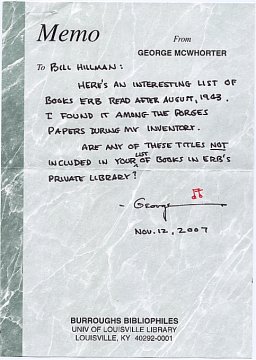 |
EDGAR RICE BURROUGHS FROM 1943 An Addendum to the ERB Library Project www.ERBzine.com/dan Found by George McWhorter
"A few of the books I read from Aug 1943
|
| Richard von Krafft-Ebing, M.D. |
| Psychopathia Sexualis: With Especial Reference to the Antipathic
Sexual Instinct A Medico-Forensic Study
~ 1886 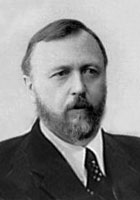 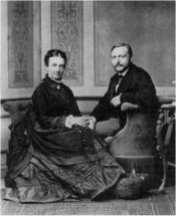  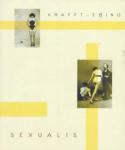
A classic in the field of sexology. Controversial for decades, this classic 19th-century work on so-called sexual deviation is the pioneering collection of case studies that cataloged and defined "perversion" -- from fetishism to incest to homosexuality and much more. Informative and entertaining, PSYCHOPATHIA SEXUALIS is considered one of the most important documents in humankind's modern efforts to understand itself with 237 classic case histories of lustmurder, necrophilia, pederasty, bestiality, transvestism, rape, mutilation, sado-masochism, exhibitionism and other psychosexual proclivities. |
Excerpts from the Wikipedia Entry |
BIOGRAPHY |
| Isaac Taylor Headland (1859-1942) (Professor in the Peking Univ.) |
| Court Life in China: The Capital, Its Officials and People
~ New York, F.H. Revell, c1909 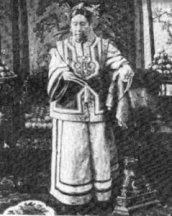 Contemporary
discussion of reform efforts in late imperial China, with a significant
discussion of the lives of elite women, and an extended account of the
rule of the Empress Dowger. Contemporary
discussion of reform efforts in late imperial China, with a significant
discussion of the lives of elite women, and an extended account of the
rule of the Empress Dowger.
eText
Edition 1
OTHER
|
PREFACE |
| E. Phillips Oppenheim (1866-1946) (Autobiography) |
Pool of Memory ~ Boston: Little Brown, 1942
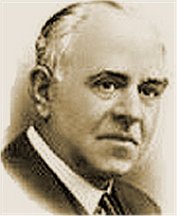 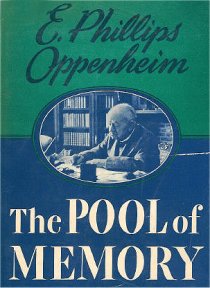
Other Books in eText by Oppenheim Online Biography Oppenheim Home Page Edward Phillips Oppenheim was born on 22 October 1866, in London, England. His father Edward John Oppenheim was a leather merchant, his mother Henrietta Susannah Temperley Budd. He attended the Wyggeston grammar school in Leicester. When he was sixteen years old he left school to assist his father in his leather business for twenty years. When his father died, Oppenheim concentrated on his writing. Oppenheim published over 150 books and countless magazine stories between 1884 and 1946. While most often identified as a mystery writer, Oppenheim's novels range from spy thrillers to romance. All of them have, however, an undertone of intrigue. Several of his books were published under the pseudonym, Anthony Partridge. Supplementary Information in the ERB
Library Shelf o1
|
| A. Hyatt Verrill (1871-1954) |
| Lost Treasure: True Tales of Hidden Hoards
New York, D. Appleton & Co., 1930 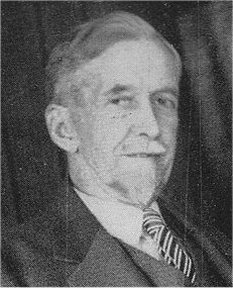 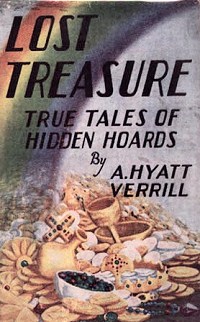 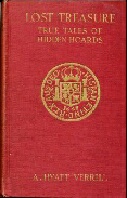 From Who Was Who in America |
| Irvin Anthony (1890 Mar 5 - 1971 Dec 6) |
| Revolt at Sea ~ 1937
OTHER
|
| Emerson Hough (1857-1923) |
The Passing of the Frontier: A Chronicle of the Old West New Haven:
Yale
University Press OR Oxford University Press ~ 1918
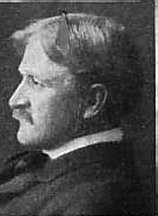 Emerson Hough was an
American author and journalist, best known for writing realistic and historical
novels of life in the American West. His works helped establish the Western
as a popular genre in literature and motion pictures. Hough was born on
June 28, 1857, in Newton, Iowa. In 1880 he graduated from the State University
of Iowa, where he had studied law and earned a Bachelor of Philosophy degree.
He explored Yellowstone on skis and his reports were largely responsible
for an act of Congress protecting the buffalo in the park. He died April
30, 1923, Evanston, Illinois, of heart and respiratory complications. Emerson Hough was an
American author and journalist, best known for writing realistic and historical
novels of life in the American West. His works helped establish the Western
as a popular genre in literature and motion pictures. Hough was born on
June 28, 1857, in Newton, Iowa. In 1880 he graduated from the State University
of Iowa, where he had studied law and earned a Bachelor of Philosophy degree.
He explored Yellowstone on skis and his reports were largely responsible
for an act of Congress protecting the buffalo in the park. He died April
30, 1923, Evanston, Illinois, of heart and respiratory complications.
("Read 61 pages. Too dry") Supplement to the main entry in the ERB Library Project: Shelf h2 eText Edition Filmography The Papers of Emerson Hough |
By Emerson Hough in 1918 |
| Ralph D. Paine |
The Old Merchant Marine, a Chronicle of American Ships and Sailors
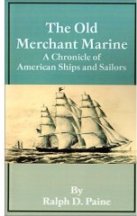 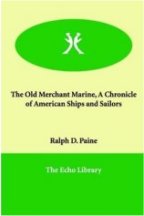 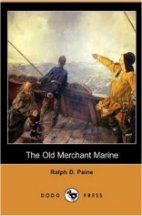 The book covers the period from the end of the colonial days to the clipper ships. The story of American ships and sailors is an epic of blue water which seems singularly remote, almost unreal, to the later generations. Vanished fleets and brave memories-a chronicle of America which had written its closing chapters before the Civil War! There will be other Yankee merchantmen in times to come, but never days like those when skippers sailed on seas uncharted in quest of ports mysterious and unknown. Ralph D. Paine was an American author of many maritime books and a friend of Stephen Crane, author of The Red Badge of Courage. |
| John Spencer Bassett Ph D (1867–1928) |
A Short History of the U S - 1492-1938 ~ NY, MacMillan Co. 1923,
Hardcover. B&W Illustrations 942 pages
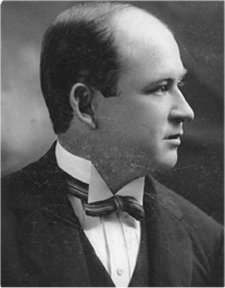 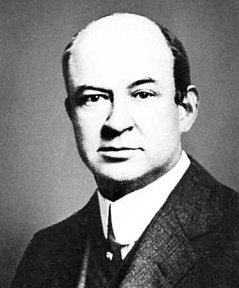 
|
BIOGRAPHY |
| Inspector Harold Brust of Scotland Yard (1897-1951)
Ghost Writer: Reginald Evelyn Peter Southouse-Cheyney |
| "I Guarded Kings" the Memoirs of a Political Police Officer
New York: Hillman-Curl, Inc. 1936. 288pp. Eighteen illustrations from photographs. Jean-Baptiste Victor Sipido (1884 – 1959) was a Belgian socialist who became known when he, then a young tinsmith's apprentice, attempted to assassinate the Prince of Wales at the Brussel-Nord railway station in Brussels on April 5, 1900. Accusing the Prince of causing the slaughter of thousands during the Boer War in South Africa, the fifteen-year-old leaped onto the foot board of the royal compartment right before the train left the station, and fired two shots through the window. Sipido missed everyone inside and was quickly wrestled to the ground. The assassination attempt is desribed in Brust's memoirs who was then a member of the Royal Bodyguard. Opening Line: "SHADOWS . . . they loom behind every king and queen, every prince and princess, every potentate, dictator and eminent personage..." Brust's ghost writer was Peter Cheyney, a very popular and prolific novelist and crime novelist. He had been badly wounded at the 2nd Battle of the Somme in WWI. |
| R. H. Platt Jr. (Rutherford Hayes) (Aug 11, 1894 - March 28, 1975) |
| Mr. Archer, USA ~ Doubleday 1924
("Archer was presumably 'Capt Macklin' of Richard Harding Davis's story.") The self-told tales of an old timer in the army, "translated into writing from the oral," made into a book. It is the life story of a man who satisfied his wanderlust in the Army. He took a hand at San Juan, in Luzon, in the Boxer Rebellion, in an Honduran revolution, in the Great War, and tells about them all as his personal adventures. The book has no style except the lingo of the doughboy, but it makes a flowing tale that carries the reader off forgetfully, through innumerable adventures, human, dangerous, unbelievable, yet convincingly real. |
| Horace Bleackley |
| The Story of a Beautiful Duchess: Being an Account of the Life And
Times of Elizabeth Gunning
(Duchess of Hamilton & Duchess of Argyll) ~ Archibald Constable, London. 1907 362pp Plates 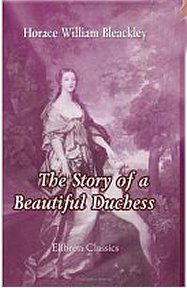 |
| Noel Coward 1899-1973 |
| Present Indicative (Autobiography - pt. 1) ~ London: Heinemann,
1937.
First published in 1937, Present Indicative is the first part of the autobiography of one of the most celebrated characters in British theatrical history and hints at the success that would come to Coward as actor, playwright, novelist and performer. Each line is punctuated with his trademark effervescent wit, making this book a comic tour de force in its own right, as well as a "must read" for anyone with an interest in the world of theater. |
BIOGRAPHY |
|
ERBzine 2002 |
ERBzine 2003 |
ERBzine 2004 |
ERBzine 2005 |
ERBzine 2006 |
 |
 |
 |
 |
 |
 |
 |

WEBJED:
BILL HILLMAN
Visit
our thousands of other sites at:
BILL
AND SUE-ON HILLMAN ECLECTIC STUDIO
All
ERB Images© and Tarzan® are Copyright ERB, Inc.- All Rights Reserved.
All
Original Work ©1996-2008/2010 by Bill Hillman and/or Contributing
Authors/Owners
No
part of this web site may be reproduced without permission from the respective
owners.